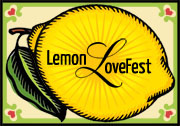|
20 Nov
2010 |
A Moveable Feast 
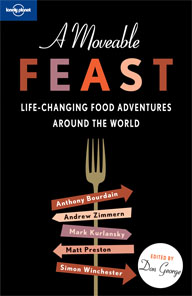 Have you ever had a food adventure that changed your life? A lot of people have, but not everyone shares it with the world. Now, 38 authors—“chefs, food critics, poets and travel writers—some of them bestselling, some never published before” share their life–changing food adventures from around the world in a new anthology from Lonely Planet Publications edited by its Global Travel Editor, Don George, and entitled A Moveable Feast. In the introduction, Don offers his own food adventure and explains that “travel and food are inseparably intertwined…wherever we go, we need to eat.” (I would only add that wherever we go, we also need to drink, but as I’ve said many times before, wine is food—so I guess Don already said it well.) In constructing this collection, Don rediscovered his inner adventurer, focusing more on the beauty, taste and “communing of spirit” that food evokes—the “effort, attentiveness and intention that infuse and inform what we share.”
Have you ever had a food adventure that changed your life? A lot of people have, but not everyone shares it with the world. Now, 38 authors—“chefs, food critics, poets and travel writers—some of them bestselling, some never published before” share their life–changing food adventures from around the world in a new anthology from Lonely Planet Publications edited by its Global Travel Editor, Don George, and entitled A Moveable Feast. In the introduction, Don offers his own food adventure and explains that “travel and food are inseparably intertwined…wherever we go, we need to eat.” (I would only add that wherever we go, we also need to drink, but as I’ve said many times before, wine is food—so I guess Don already said it well.) In constructing this collection, Don rediscovered his inner adventurer, focusing more on the beauty, taste and “communing of spirit” that food evokes—the “effort, attentiveness and intention that infuse and inform what we share.”
This work follows three previous Don George anthologies from Lonely Planet—The Kindness of Strangers, By the Seat of My Pants and Tales form Nowhere. In keeping with the tradition established by those three collections, each author shares his or her adventure in a short–story format. From “Ode to Old Manhattan” by Anthony Bourdain to “Tijuana Terroir” by Jim Benning to “Couscous and Camaraderie” by Anita Breland to “Communion on Crete” by Rhona McAdam to “Himalayan Potatoes” by Larry Habegger to “Siberian Chicken” by Anthony Sattin to “Cooking with Donna” by William Sertl, and more than 30 others, you are transported around the globe and treated to bite–sized literary appetizers that are truly delicious but leave just enough room for another helping. Often, I found it difficult to close the cover without first peeking ahead at the next story, as I was curious to learn that author’s take on the food–sharing experience.
In a Wine Imbiber article two years ago, Our First Day in Chianti, I described our first adventure in the Chianti countryside and our long trek on a winding gravel drive to a restaurant we had found on the internet without any recommendation from friends. Discouraged along the way, we almost turned back, but we persevered. Our reward was an amazing introduction to the traditional Tuscan meal. Yet, it was another communal food experience on that same trip to Italy that still stands out in my mind today as I think about the stories in “A Moveable Feast”.
Leah and I and our daughter and three sons had already relaxed a few days based at Tenuta di Spannocchia, a Tuscan agriturismo near Siena, where we traveled back in time for a week. Our three sons (then in the 11–13 age bracket) joined me one morning to meet Carmen, Spannocchia’s Garden Manager, who introduced us to their organic vegetable and herb gardens which feed the entire farm staff and all their guests year–round. Carmen taught us about crop rotation, cover crops, the creation and use of compost, pests and predators, the role of greenhouses and much more. Having had farmers for grandparents, some of this was familiar to me, but it was all new to the boys who, to my surprise, listened intently. I still have a leaf of lemon verbena and a mosquito pressed between the pages of my notebook.
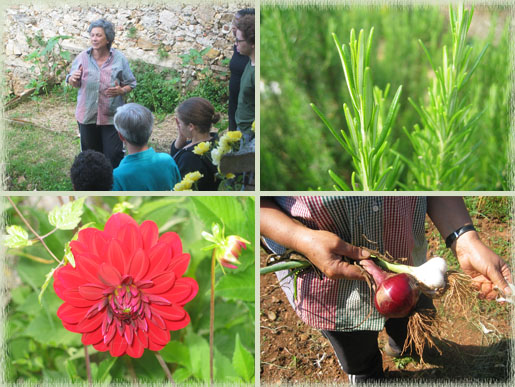
On another morning, we hiked up the hill to watch one of the student interns feed the pigs before it was time to gather for a tasting of salumi (cured pork—salame, sausage and “everything else”). Not just any pigs, these were Cinta Senese pigs, a breed that was common in Italy for centuries but was seriously endangered by the 1990s, to the point of near extinction. Spannocchia is laboring to revive this breed, now the only Tuscan native swine breed to survive extinction. The Cinta Senese pig has a black coat with a distinctive white stripe (or “cinta” which means a belt or ribbon that surrounds) running from front leg to front leg across its front shoulders and back and a looping tail (not the tightly curled type). Their ideal height when full grown is 80 centimeters from ground to the top of the shoulder. The ones with the wider cinta stripe are not good for breeding, so they tend to find themselves transformed into prosciutto. Actually, these pigs yield an amazing array of meats, including prosciutto (hind leg), salame (front leg), lardo (cured fat with juniper, rosemary and bay leaves), pancetta (belly), spalla (shoulder at front of leg; sometimes confused with prosciutto, but prosciutto is superior), capocollo (head of the neck), soppressata (also called “head cheese” because the head goes into the vat to boil along with other miscellaneous parts), salame Toscano (riddled with large pieces of fat and black peppercorns), guanciale (cheek) and buristo (blood sausage).
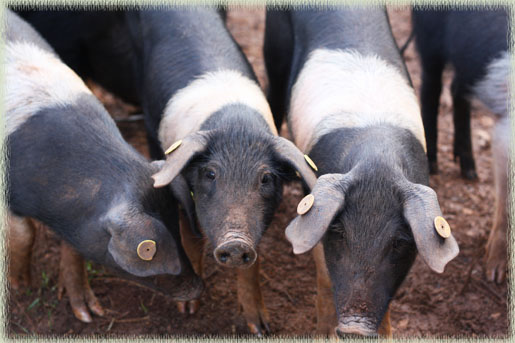
As she fed the pigs, the intern taught us some porcine history as she tromped around in the thick, deep mud of the pen, surrounded by anxious pigs, tossing feed in various directions in an effort to keep the larger pigs from crowding out the smaller ones. Everyone (the pigs and our children) squealed in high pitch the entire time. The pigs normally just grunt and squeal in lower pitch when not being fed. When the excitement died down, we slowly worked our way back to the farmhouse, stopping periodically to inspect the vivid wild flowers in the pasture.
Back at the farmhouse, it was time for the salumi tour. Leah and the children passed quickly through the butchering room, not wanting to spend too much time viewing the array of severed limbs and body parts in their bright red condition. The curing room had a musty, pungent smell and our boys enjoyed bobbing between the prosciutto legs hanging by their hooves from the ceiling. Once inside the tasting room, everyone was comfortably seated and ready to experience the end result of all the effort that begins with the birth of piglets.
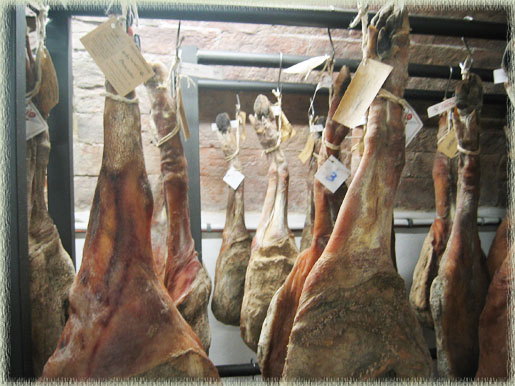
By the time the salumi plates were placed before us, our children certainly had a newfound appreciation for all the dedication, care and hard work—from birthing, raising and tending the pigs to the skill of the butcher and, finally, the lengthy curing process—that delivers a deceptively simple salumi meal to the table. The salumi was delicious (some of it even melted in my mouth), but it was just the entrée to the experience. After our guide led us through a culinary tour of the various meats, paired with many rounds of the house Chianti, we cultivated a conversation with two of the other guests, Anna and Matt, who live in London.
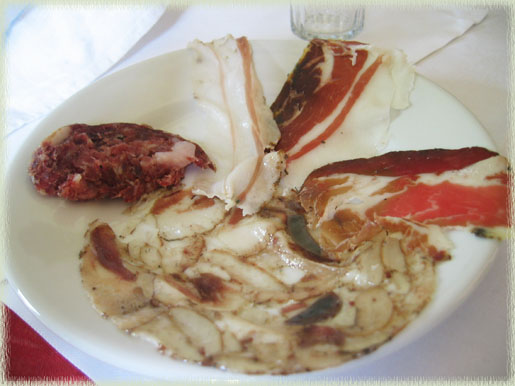
Matt is a computational linguist at Stanford University and Anna is a culinary anthropologist. They travel extensively for Anna’s work, sometimes to very remote parts of the world. I don’t recall what brought it up, but I told them about the time our daughter (then an infant) and I slipped and fell on a bed of lava rock in Hawaii and my punishment was to hold our daughter while a doctor stitched up her scalp. About a week later, at a follow up appointment, her doctor noticed my leg and a raging infection from the lava rock and very casually asked me if I wanted to keep my leg (which required a rather large shot of antibiotics and a lengthy regimen of pills).
Not to be outdone, Anna offered her account of the time she and Matt were exploring deep within Africa and she happened to scrape her knee. At the time, she thought nothing of it, but she soon became very ill and was ultimately very near death’s door. Fortunately, the local villagers were able to get a doctor to come and see her. The doctor was quite drunk at the time, but he was able to diagnose her condition and gave her a foul–tasting remedy to swallow. She couldn’t really say what the remedy was, but in relatively short order she was completely cured. Satisfied with our salumi feast (and the Chianti kept tasting better and better), we spent the next hour or so talking about food, wine and travel and then it dawned on me that we were halfway around the world, making friends, sharing personal details of our lives with each other after meeting only an hour before, all because we were joined together in a place where time ran slower and we were sharing food (and wine, of course) that had been passionately prepared by hand.
A Moveable Feast delivers this communal experience in many unusual settings and circumstances that vividly illustrate how all of us, wherever in the world we are, are all bound together by the culinary experience. It makes for delicious reading, particularly as we all make plans for our own potentially life–changing food adventures over Thanksgiving, the Christmas season and New Year’s Day. After launching this book, Don George reveals, “I chew more intently and more intensely, and wherever I am, I cherish more mindfully the camaraderie that food convenes. I hope this humble meal will have the same effect on you.” I’m happy to say, it has!
Note: This book review was quoted in the Princeton Alumni Weekly Blog.
Disclosure: We were provided a copy of this book for review.











